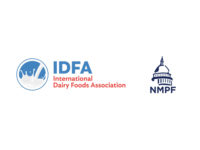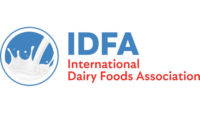USDA plans to maintain low-fat flavored milk for students
The NMPF and IDFA expressed optimism for USDA’s proposed updates to school meal nutrition standards.

The National Milk Producers Federation (NMPF) and the International Dairy Foods Association (IDFA) expressed optimism for USDA’s proposed updates to school meal nutrition standards, specifically USDA’s plans to maintain low-fat flavored milk for students. NMPF and IDFA continued to call on USDA officials to expand milk and dairy options in schools to ensure children have access to the nutrients they need each day, consistent with the 2020-2025 Dietary Guidelines for Americans.
“Children having access to the healthful foods they need to grow and focus in school is a key priority for dairy farmers,” said Jim Mulhern, NMPF President and CEO. “Milk is the top source of calcium, potassium, phosphorus, and vitamin D in kids ages 2-18, and 1% flavored milk is a nutrient-dense, low-fat option students will actually choose to drink. We are pleased USDA is maintaining low-fat flavored milk in schools, providing children with an additional, and favored, choice to access the 13 essential nutrients milk provides, including three of the four nutrients of public health concern. But we question why USDA would propose school meal options that could limit a child’s access to these nutrients and we urge instead that they expand access to dairy options. Providing low-fat flavored milk will increase students’ intake of nutrients vital for their growth and development.”
“The most recent Dietary Guidelines report is clear: children are not receiving enough essential nutrients for growth, development, healthy immune function, and overall wellness,” said Michael Dykes, D.V.M., IDFA president and CEO. “Healthy milk and dairy options in school meals offer the most important opportunity of the day for children to get the critical nutrients they need. For years, parents and nutrition professionals have agreed that milk and dairy products must remain key building blocks in school meals. While we are pleased that this proposed rule continues to make dairy central to child nutrition, we are concerned with USDA’s ongoing efforts to propose limitations to milk and dairy in school meals, which run counter to the Dietary Guidelines and the mandate of America’s parents.”
NMPF and IDFA are carefully reviewing other provisions set forth in the proposed rule, including the weekly added sugars and sodium limits, to assess their impact on students’ ability to benefit from nutrient-dense dairy food. NMPF and IDFA will submit formal comments as requested by USDA.
NMPF and IDFA also expressed gratitude to Representatives Glenn ‘GT’ Thompson (R-PA), Joe Courtney (D-CT), Elise Stefanik (R-NY), and Mark Pocan (D-WI) who have worked for years to restore and maintain nutritious school milk options.
“We are grateful to Chairman Thompson and Reps. Courtney, Stefanik and Pocan for their leadership and advocacy for dairy as a way to ensure that schoolchildren have access to the healthy, nutrient-dense milk options they will consume,” Mulhern said.
We are grateful to Chairman Thompson and Representatives Courtney, Stefanik, and Pocan for their consistent legislative efforts to get milk’s 13 essential nutrients to as many school children as possible,” said Dykes. “Offering low-fat flavored milk and other milk options increases school meal participation, reduces food waste, and ensures children and adolescents are learning and growing.”
Looking for a reprint of this article?
From high-res PDFs to custom plaques, order your copy today!







